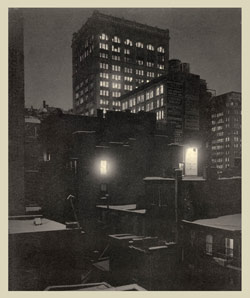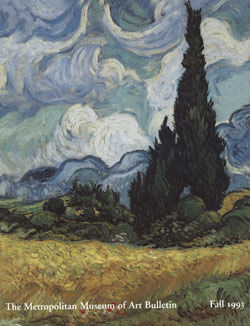[Brancusi's Studio]
Edward J. Steichen American, born Luxembourg
Not on view
Steichen lived in Paris on and off from 1900 to 1924, making paintings and photographs. A cofounder with Alfred Stieglitz of the Photo-Secession, Steichen offered his former New York studio to the fledgling organization as an exhibition space in 1905. Known first as the Little Galleries of the Photo-Secession and later simply by its address on Fifth Avenue, 291, the gallery introduced modern French art to America through the works of Rodin, Matisse, Cézanne, and, in 1914, Constantin Brancusi.
Steichen and Brancusi, who met at Rodin's studio, became lifelong friends. This view of a corner of Brancusi's studio on the impasse Roncin shows several identifiable works, including "Cup" (1917) and "Endless Column" (1918). The photograph's centerpiece is the elegant polished bronze "Golden Bird" (1919), which soars above the other forms. Distinct from Brancusi's studio photographs—subjective meditations on his own creations—Steichen's view is more orchestrated, geometric, and objective. "Golden Bird" is centered, the light modulated, and the constellation of masses carefully balanced in the space defined by the camera. A respectful acknowledgment of the essential abstraction of the sculpture, the photograph seems decidedly modern and presages the formal studio photographs Steichen made in the service of "Vanity Fair" and "Vogue" beginning in 1923.
Due to rights restrictions, this image cannot be enlarged, viewed at full screen, or downloaded.
![[Brancusi's Studio], Edward J. Steichen (American (born Luxembourg), Bivange 1879–1973 West Redding, Connecticut), Gelatin silver print](https://images.metmuseum.org/CRDImages/ph/web-additional/DP232898.jpg)


